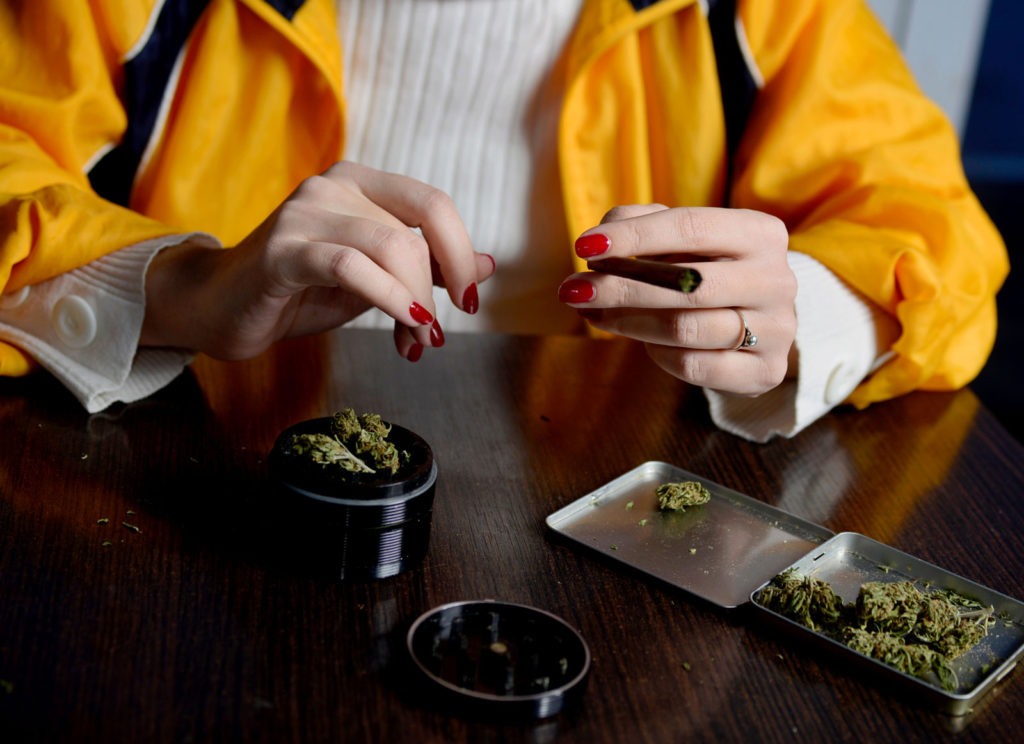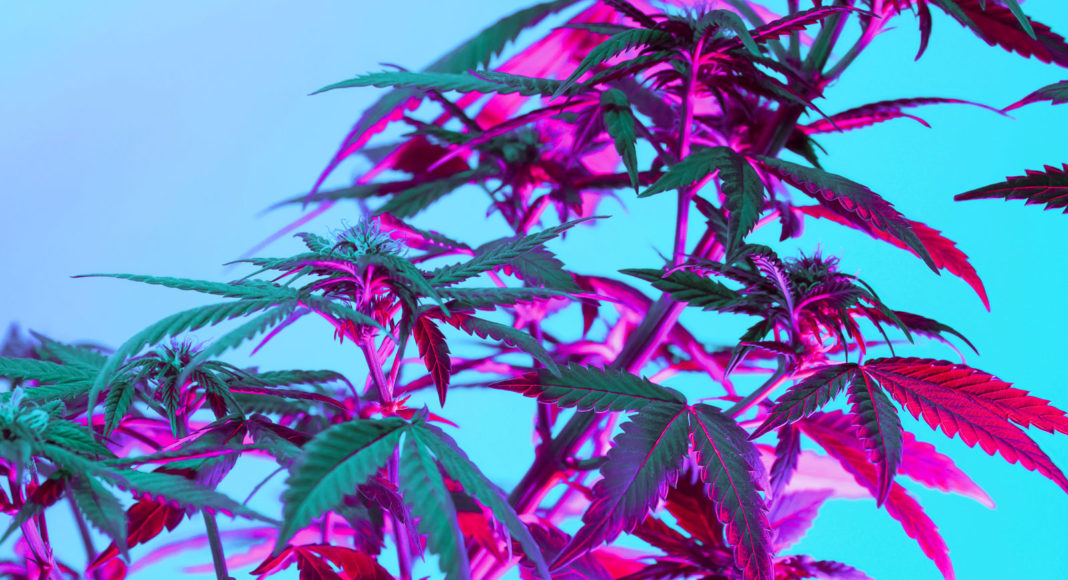“Cannabis has been used for its healing properties for millennia. The first documented case of its use dates back to 2800 BC, when the father of Chinese medicine, Emperor Shen Nung, listed it in his pharmacopoeia.”
—“History of Cannabis” from the Lambert Initiative for Cannabinoid Therapeutics, University of Sydney
Because the United States government classifies cannabis as a Schedule 1 drug, on the same danger level as heroin, research into the benefits of this benign plant has been nearly impossible.
But in California, which legalized recreational weed in 2016, there’s a California Department of Cannabis Control. Even the San Jose Police Department says that the city’s Cannabis Equity Program “offers an opportunity to residents who may have been harmed by years of cannabis prohibition and the ‘War on Drugs.’”
The times are a-changin’, and research is starting to emerge. In honor of 420, this story presents studies that debunk scary lies and examines a few ways weed makes life wonderful. We start with a classic stereotype.
Cannabis and Creativity
I wanted to be a lion of a novelist
Stand on the shoulders of Kurt Vonnegut
But I’ve handled more roaches than an entomologist
And it’s all I can do to be a comic monologist
Probably the number-one smack against pot smokers is that our habit lowers our motivation. We’re lazy and irresponsible.
But new science says cannabis has been given a bad rap as a demotivator. OK, maybe I have not painted my masterpiece yet, but if you’re calling me a procrastinator… just you wait.
Springer Link behavioral neuroscience researchers published a report in December 2023 that says, “Of the five non-acute studies (meaning outside of a hospital) which used behavioral tasks to assess motivation, three found that cannabis use was associated with higher willingness to expend effort for reward, while the other two found no differences between cannabis users and controls.” The Springer Link study goes on to say, “Tetrahydrocannabinol (THC), the main psychoactive compound in cannabis, acts on the endocannabinoid system, and can enhance the motivational and reinforcing effects of food and drug rewards.”
This goes way beyond getting the munchies. Many of the most creative people in the world use it for their art. As filmmaker Oliver Stone said, “I believe grass is God’s gift.”
Marijuana and Music
“In California we voted to legalize medical marijuana five times because we always forget we already have.”
People talk about weed making short-term memory elusive. But this very forgetfulness is thought to have been fundamental in the creation of improvisational jazz. Marijuana has been intertwined with jazz culture since the early 20th century. Jazz came out of New Orleans and migrated to cities like Chicago and New York, and marijuana went with it.
Louis Armstrong, Charlie Parker, Miles Davis, Thelonious Monk and Dizzy Gillespie often claimed that marijuana enhanced their playing—that it gave them an edge over players who were not “vipers.” It not only allowed them to intuitively anticipate each other’s movements, to “be in the zone” for uninhibited expression, but that even reefer’s effect of distorting time gave them an edge. It gave them more time between the notes.
The magazine Cannabis Culture quotes pharmacologist James Munch, a chemist who worked under pot opponent Harry Anslinger, the first commissioner of the U.S. Treasury Department’s Federal Bureau of Narcotics: “if you’re using marijuana, you are going to work in about twice as much music in between the first note and the second note. That’s what made jazz musicians. The idea that they could jazz things up, liven them up, you see.”
According to Leafly.com, the “time” area of the brain contains a large number of cannabinoid receptors, so when THC floods the brain, it disrupts these receptors, and one second can feel like five seconds. A guy like Charlie Parker can do a lot with that extra time.
All stoners have experienced losing track of the thread of a conversation. The jazz masters talk about reefer making them “lose track” of their composition. For a player who has mastered their instrument, a momentary ‘‘forgetting’’ of the limiting parameters of a musical piece might lead to the wild abandon that a great jazz improv needs.
The creators of jazz constantly practiced together, played together and smoked reefer together. They were masters of their instruments, and by becoming open to new ways of feeling, they believed momentarily “forgetting the structure” led them to their greatest work. In an article titled “Jazz on Cannabis: A Brief History” on the site Pilgrim Soul Creative, author Peter Webster wrote, “Cannabis very probably contributed to, or was used as a tool to facilitate the jazz revolution in music.”
Daniel J. Levitin, music psychologist and professor of psychology and behavioral neuroscience at McGill University, talked about how cannabis can enhance listening to music in his book The World in Six Songs. “THC, the active ingredient, is known to stimulate the brain’s natural pleasure centers, while also disrupting short-term memory. The disruption of short-term memory thrusts listeners into the moment of the music as it unfolds; unable to explicitly keep in mind what has just been played, or to think ahead to what might be played, people stoned on pot tend to hear music from note to note.”
Of course, there are many world-class jazz players who play sober as a judge, but I lived with a jazz drummer who claimed that straight jazz drummers don’t get the same feel with their grace notes. Nor do they communicate with the other players as intuitively. You certainly don’t have to be high to play great jazz, but the greatest did.
And jazz isn’t the only genre that embraced cannabis. Bob Dylan, who introduced weed to the Beatles, said of psychotropics in a 1963 Playboy interview, “They just bend your mind a little. I think everybody’s mind should be bent once in a while.”
Weed and Walking
It’s true that I’m likely to go for a walk when I’m high, especially when I can’t remember where I parked my car.
Researchers affiliated with the University of Texas and Ohio University compared exercise patterns with cannabis consumers and non-consumers. They reported no significant differences between the two groups in their frequency of strength training or general activity. However, they said, “Cannabis consumers were more likely than non-users to walk for exercise.”
“Our results indicate that marijuana use is not associated with low exercise rates among adults in the U.S.,” say researchers at the National Organization for the Reform of Marijuana Laws (NORML). “These findings challenge the stereotype that marijuana users are less active than their non-using counterparts. Among those age 60 and older, marijuana use has been associated with increased exercise frequency.”
Dale Gieringer, director of California NORML, tells me, “In general, marijuana users tend to have slightly lower weight than average, despite its reputation for inspiring the ‘the munchies.’ There is something synergistic between marijuana and exercise. I have a habit of taking a hike in the afternoon and I always take some weed with me.”
I love to work out high. One sativa toke over the line and my arthritis fades away. Feeling the blood pump through my muscles is akin to the effects of having sex, and I can go and go. And that is my problem: I feel no pain.
Back when I was a runner, one 420 afternoon I did my 30-minute jog and felt like my feet were not even touching the ground. I sped up, lost in my sativa fog. At 44 minutes I heard a click in my left knee, and limped home. Now, when I’m high I exercise…caution. Riding the stationary bike seems to make my legs feel the best, but I never get far.
You don’t have to take a lot. Millions of potheads are micro dosing. Christopher Carr of Cannconnet.org says, “One microscopic resin gland can hold a cosmic constellation of beneficial compounds that will reduce anxiety, will reduce inflammation. Dial in your dose.”
For those who want to try hiking high, a full-spectrum 5mg gummy might be a good place to start. Aside from experienced, high-tolerance users looking for an out-of-body experience, it’s best to wait at least one hour before taking another. Overdosing on cannabis is low risk, but those who miscalculate their tolerance might start hearing a quote from the great FDR, who famously said, “The only thing we have to fear is paranoia itself.”


For those who think they might have gotten too high on the trail, just wait. Listen to the water running over the rocks, the wind blowing through the trees and notice how they are similar. A door of perception might open. Neurons slow down, and allowing oneself to feel more. Go for it all. At the peak, remember that all effects are temporary; the high is meant to be enjoyed. Slow down and enjoy it.
A friend told me about her first time at her gym’s Zumba class. She felt intimidated and anxious; the instructor was big and loud and barked orders like a drill sergeant. He yelled at people who fell behind. She decided she was done and left the class.
Her boyfriend came over the next day with some 5mg gummies and suggested they might be good to work out with. She didn’t want to be scared off; she chewed the gummy and went back to class. The loud instructor didn’t bother her anymore. Now she has joined a martial arts class and takes a micro dose of cannabis on her way to the studio.
These are just a couple examples of possible uses of legal recreational cannabis. There is a universe of healing inside this ancient plant, and we have the cannabinoid receptors in our bodies just waiting to receive the medicine. Despite the federal government’s refusal to take marijuana off Schedule 1 status, scientists are starting to come out of the closet with their cannabis research.
Richard Stockton, an author, comedian and psychonaut, cautions readers that cannabis is not for everyone. Inexperienced users should consult with their doctor before following suggestions presented in this article. Health conditions, prescribed medications and personal susceptibility can influence how cannabis interacts with the body.



